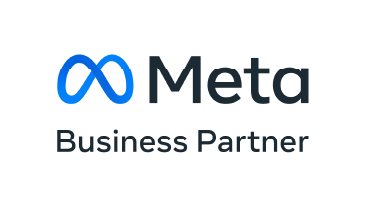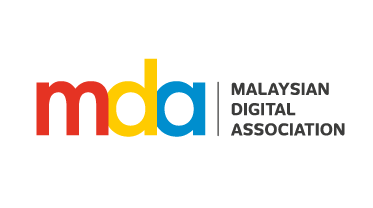What is Responsive Search Ads and How do We Use Them
As our lives become more automated, you now have an extra tool in your digital marketing arsenal – Google’s responsive search ads (RSA).
But wait, how do these search ads work? What is “responsive search ads”? Are responsive search ads better than Google’s previous expanded text ads? How do you create them?
Responsive search ads or RSAs are changeable ads – they adapt to show a version of your ad, or ad combinations, that is most relevant to potential customers.

Example of a Google responsive search ad. Google’s algorithm will show the best-performing ad to your customers, increasing CTR and conversions. Photo: screenshot from Google’s homepage.
Table of Contents
How do Google responsive search ads work?
Responsive search ads “respond” to users’ search queries to show them a variation of your ad that is the closest match to their keywords.
Google does this by having machine learning test different combinations of ad headlines and descriptions that you can create yourself.
The algorithm eventually learns which ad performs the best to show to users.
As Google Ads pushes for more dynamic, automated search engine marketing, responsive search ads will slowly replace Google’s previous Expanded Text Ads (ETAs), which ceased as of June 30 this year.
(Existing expanded text ads will still run until they slowly become obsolete when the algorithm eventually starts to prioritize RSAs)
With this latest update, Google offers you the ability to create multiple headlines compared to the previous expanded text ads.
You can also create a maximum of three responsive search ads per ad group.
Here’s how to create responsive search ads:
- Create at least three headlines. Up to 15 headlines are allowed. Don’t forget to do keyword research as this would improve ad strength, or get a digital marketing agency like us to do this for you.
- Do the same for descriptions – you can include up to four descriptions per responsive search ad.
- You are allowed to run three different RSAs from the same ad group, which comes up to a total of 45 headlines and 12 descriptions. You must create as many unique headlines as possible to fill the quota.
- Google Ads automatically tests your copy by picking three headlines and two descriptions to show up in different orders and combinations. Google may show part of the text in bold when it matches or closely matches a user’s search query.
- Over time, Google’s machine learning will learn which ad does the best in terms of lead generations and click-through-rates (CTR).
Then, the algorithm shows the most promising search ad most relevant to users.
Maximize your responsive search ads:
- If there is any phrase or word that must appear in your ad, you should add these to Headline 1, Headline 2, or Description 1.
- If there are ad headlines and descriptions you’d want on every RSA, pin headlines and descriptions in specific positions. Pinning headlines will ensure critical information (such as disclaimers) shows up in every ad that Google displays.
- Ensure ad headlines and descriptions read well in any variation or individually.
- Remember the character limit to prevent your responsive search ads from being cut off in the middle.
- Ensure you do not violate any of Google Ads policies or local advertisement laws.
- Google recommends that at least one RSA per ad group scores “Good” or “Excellent” in Ad Strength.
Benefits of responsive search ads
RSA would result in more CTR from your prospective customers since Google will only show the most relevant ads.
Even though it might be a bit scary to relinquish control over how your text ad shows up on Google’s ai, there are long-term benefits that ultimately make your job easier:
In-depth data and statistics from responsive search ads performance
The more headlines and descriptions we input, the more ad combinations Google can produce and test.
With multiple Google Ads running simultaneously, you can get more data on the type of text ad that produces the most lead generations and conversions.
Optimize your media budget and gain deep insights into your target audience, or find a good digital agency in Malaysia that can help you.

Caption: The Google Ads algorithm will test which ad combinations perform, making your work much more manageable. Photo by Kevin Ku on Unsplash.
Efficient targeting and quality leads from responsive search ads
Ensuring a campaign’s performance will no longer be a guessing game.
Google tests the ads for you, automatically showcasing the best-performing ads to potential customers.
This means you get to reach people who would most likely purchase your products or services.

Caption: Responsive search ads do most of the targeting for you; just input good-quality headlines and descriptions for your ads. Photo by Ali Shah Lakhani on Unsplash
Mobile search ad optimization; customize search ads based on user’s mobile devices and locations
With responsive search ads, we can create Google ads that adjust depending on device widths, giving you space to share more relevant messages with your target audience.
You can also optimize your headlines and descriptions to your customers’ locations, regular locations, or locations of interest.
More auctions for responsive search ads
The option to enter multiple headlines and descriptions gives your responsive search ads opportunities to compete in more auctions and match more user queries, directly increasing your ad-groups’ performance.
The different combinations will be able to reach more potential customers and users compared to expanded text ads.
Will responsive search ads replace traditional ads?
Overall, Google’s responsive search ads are the next best thing to come out of PPC advertising.
It utilizes machine learning to maximize results without the tedious manual labor of analyzing data and testing different ads to see which performs the best.
But whether or not they will replace traditional ads remains a question.
Whatever it is, it’s good practice to use the latest Google Ads responsive search ads service for search engine marketing alongside traditional ads for the best campaigns with the best digital marketing agency in Malaysia.














Join the discussion - 0 Comment